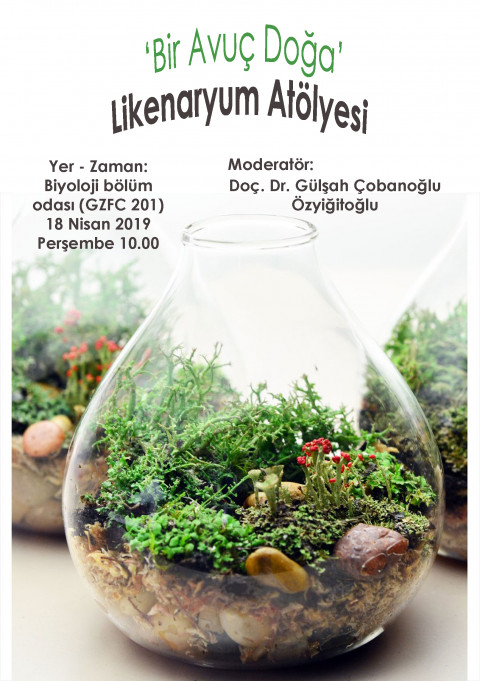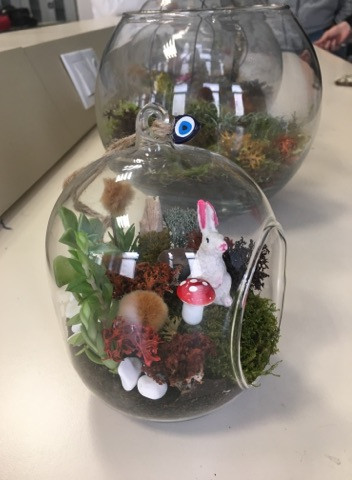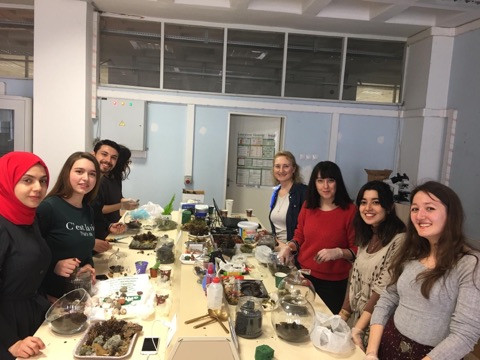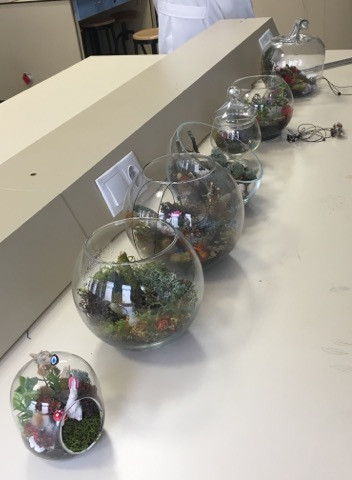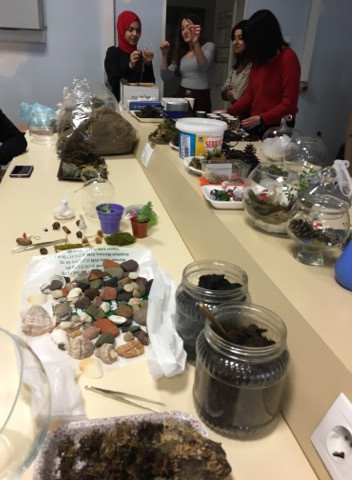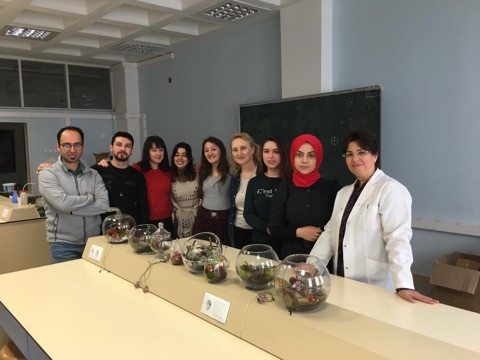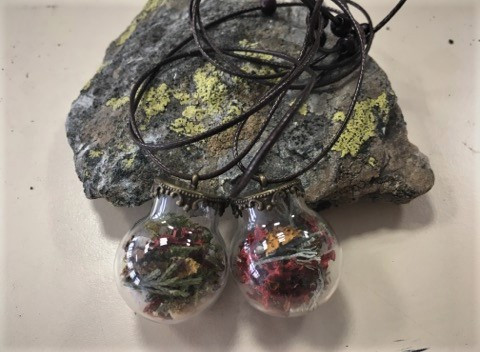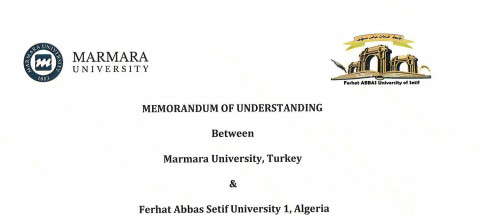Studies conducted in the Lichen Research Room and Lichenaryum-Lichen Herbarium in our department:
Lichens, which spread in various terrestrial ecosystems ranging from poles to deserts on earth and especially in clean air habitats, are an essential part of biological diversity with more than 20 thousand species. Lichens, which have many ecological roles in nature, are formed as a result of the common life of certain algae (microscopic-algae) species and fungi (mostly ascomycota) species. They are in the Kingdom of Fungi, not Plants (Plantae) in the classification. They are commonly found on trees, soil and rock surfaces. Lichen species are indicators of the air pollution level of the environment in which they live. In addition, thanks to their unique secondary metabolites, their ethnobotanical uses (such as paint, cosmetics, and medicines) for benefit of humanity are very wide.
"Lichenology", which means "lichen science", is a new sub-science of biology. Lichenology; covers lichen biology (anatomy, morphology, physiology, etc.), taxonomy (systematics, genetics, molecular phylogeny, etc.), chemistry, ecology, geography, and all lichen research in scientific fields. Lichen biota (lichen variety); are among the important biological values that need to be recognized, known, and protected. Although Turkey continued to work on the lichen flora, a checklist was published in our country of about 2 thousand lichen species (John and Turkey, 2017). Lichen science studies in our country begin with systematics and flora-intensive and continue with studies on air pollution, ecology, and then on biological activity.
Within the scope of “Lichen Researches” under the Department of Botanic of our department, lichen field studies are carried out firstly in Istanbul, Bolu, Marmara region and various provinces and systematic and ecological studies are carried out together with graduate students on the diagnosis of lichen species. In addition to systematic studies, due to the fact that lichens are used as an indicator of air pollution levels, biomonitoring studies based on multi-element analysis are frequently performed with the samples collected for this purpose. Under the "Lichen biology and ecology" course, undergraduate students interactively recognize the interesting world of lichens, and the information gained is shared with posters and presentations. Scientific articles on the air quality of the European and Anatolian sides of Istanbul have been published using the lichen biomonitoring method with postgraduate theses and projects, and similar studies continue. Biomonitoring studies are carried out with lichens for different locations in our country.
Also, within the scope of lichen research in our department, studies on biological activities (antibacterial, antimicrobial, anti-QS, antioxidant, anti-cancer, etc.) of extracts obtained from lichens are carried out considering the promising lichen chemistry in terms of obtaining drug active substances as a natural resource. In addition, various side studies are carried out on lichens for decorative purposes (such as floriculture, and terrarium).
In the herbarium (MUFE) in our biology department, “G.Ç. Lichenarium (Lichen Herbarium) as a separate section, there are approximately 3000 samples belonging to lichen collections from our country and abroad.
Lichen Research Room (GZFC 207-A)
Lichenarium (Herbarium-MUFE) (GZFC 212)
Lichen Terrarium Workshop
This page updated by Biyoloji Bölümü on 16.12.2024 19:44:41
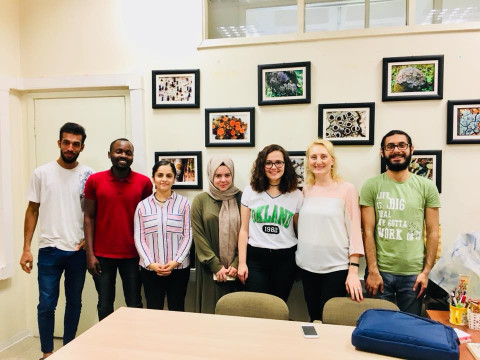
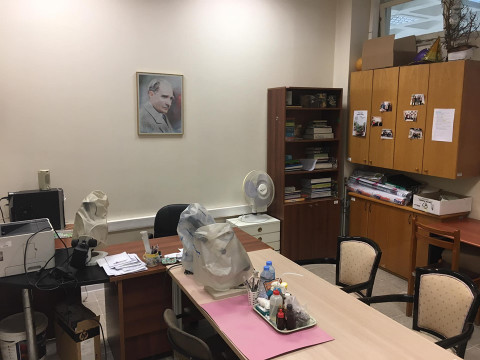
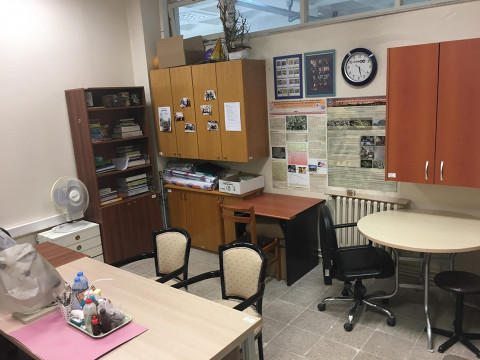
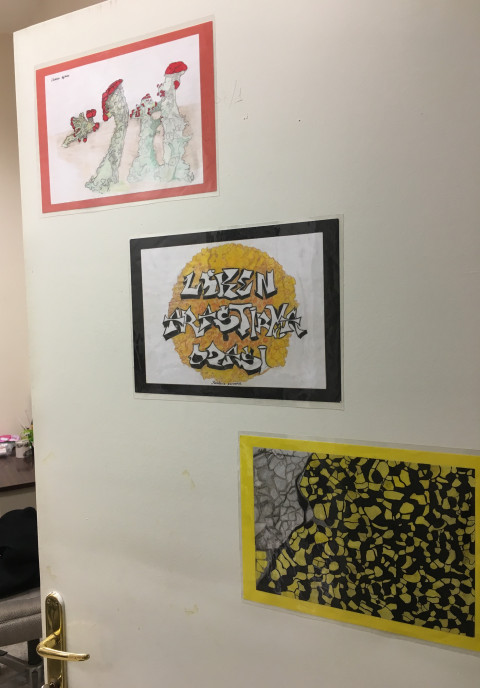
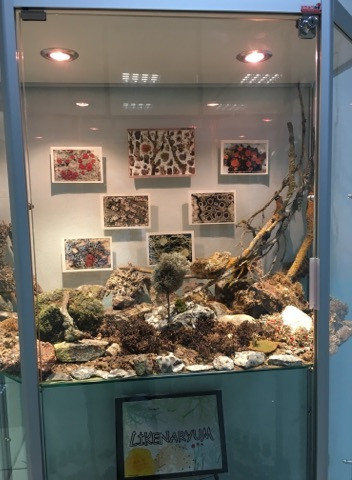
.jpg)
.jpg)
